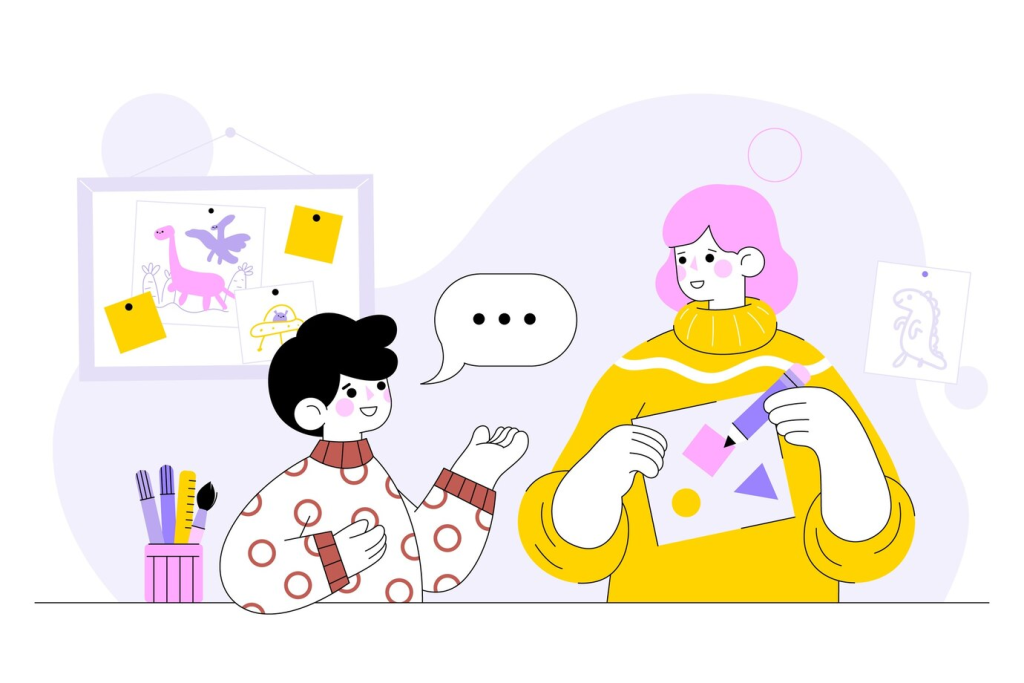Children are naturally curious. They ask questions not to challenge but to understand. For adults, especially in an increasingly complex world, their approach is a refreshing reminder that curiosity and simplicity can be powerful tools for insight and connection. This article explores how children teach us about curiosity and simplicity—and how we can apply these lessons in everyday life.

Seeing the World Without Filters
Children experience the world without the mental clutter adults often carry. They don’t overanalyze; instead, they engage with what’s in front of them.
- A flower is not just biology—it’s something to pick, smell, or give.
- Rain isn’t an inconvenience—it’s a reason to splash.
In contrast, adults tend to label, categorize, and rush past moments that might otherwise spark joy or wonder. By observing how children slow down to notice things, we’re reminded that curiosity begins with presence.
The Power of Asking “Why?”
“Why is the sky blue?” “Why do dogs bark?” These endless questions aren’t meant to test our knowledge. Rather, they reflect a deep desire to understand the world.
More importantly, children are not afraid to ask questions that might seem obvious or silly. For adults, reclaiming this mindset can reignite learning and creativity.
- In professional settings, curiosity often leads to innovation.
- In personal life, it helps build deeper relationships.
Curiosity and simplicity are not opposites of intelligence—they’re foundations for it.
Letting Go of Complexity
Modern life thrives on complexity—multitasking, optimization, and productivity. Yet, children show us that the most meaningful experiences are often the simplest:
- A cardboard box becomes a spaceship.
- A stick becomes a sword or a wand.
- A walk becomes an adventure.
By simplifying, we’re not downgrading experience; we’re enhancing attention. As a result, we often find more meaning in less.
Relearning How to Play
Play is how children explore the world. It’s unstructured, experimental, and often without a clear outcome. Adults tend to replace play with tasks, schedules, and achievements. However, neuroscience shows that play improves problem-solving, emotional resilience, and social bonding 1.
So, how can adults reintroduce play?
- Take time for creative hobbies.
- Approach challenges with a “what if” mindset.
- Allow room for spontaneity.
In doing so, we not only regain a sense of joy—we also build better brain function over time.
Practicing Simplicity in a Busy World
Returning to simplicity isn’t about minimalism for the sake of trend. It’s about creating space for what really matters. Children do this naturally. They’re not worried about productivity apps or social media metrics.
Here’s how adults can incorporate more simplicity:
- Digital Boundaries: Designate phone-free hours or zones.
- Daily Curiosity: Ask a new question every day.
- Micro-Moments: Slow down and enjoy small rituals—making tea, walking, even cleaning.
These aren’t drastic changes, but they shift our attention from noise to meaning.
Why Curiosity and Simplicity Matter Now
In a time of constant notifications, growing complexity, and information overload, curiosity and simplicity are more relevant than ever. Children offer us a blueprint for how to stay engaged with life without being overwhelmed by it.
- Curiosity keeps us asking.
- Simplicity keeps us grounded.
Together, they offer clarity in a noisy world.
References
- Brown, S. L., & Vaughan, C. (2009).
Play: How it Shapes the Brain, Opens the Imagination, and Invigorates the Soul. Avery.
https://www.penguinrandomhouse.com/books/297063/play-by-stuart-brown-md-and-christopher-vaughan/ - Gopnik, A. (2016).
The Gardener and the Carpenter: What the New Science of Child Development Tells Us About the Relationship Between Parents and Children. Farrar, Straus and Giroux.
https://us.macmillan.com/books/9780374229702/thegardenerandthecarpenter - Harvard Graduate School of Education. (2016).
“The Power of Curiosity.” Usable Knowledge.
https://www.gse.harvard.edu/news/uk/16/01/power-curiosity









